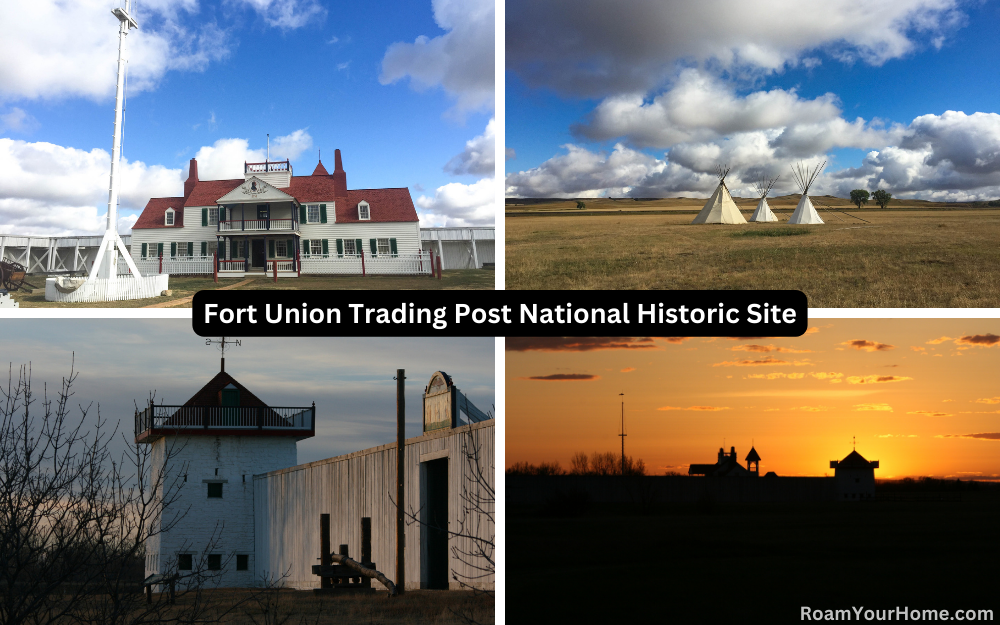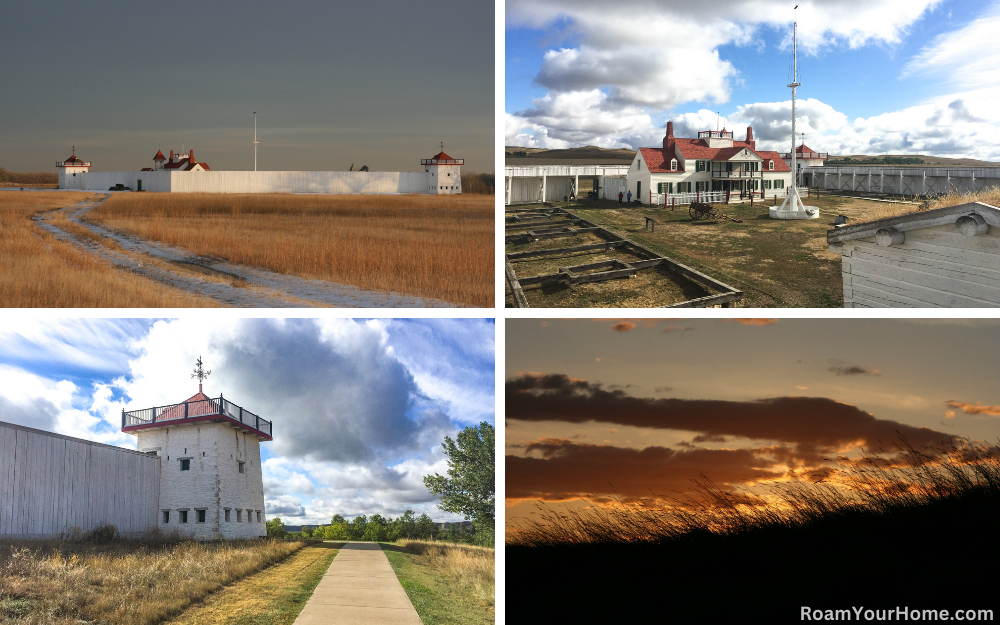
Go back in time at Fort Union Trading Post National Historic Site
Fort Union Trading Post National Historic Site is located along the banks of the Missouri River on the North Dakota and Montana border. The site is off the beaten path, not near any major metropolitan areas, and consequently, does not get many visitors. In fact, it’s one of the least visited National Park Service sites. But it should be visited more because the history is awesome.
For nearly 40 years, between 1828 and 1867, Fort Union was the most important fur trade post on the Upper Missouri River. It was here the Assiniboine, Crow, Blackfeet, and other Northern Plains Tribes traded for goods from around the world. In its heyday, it’s estimated that Fort Union annually traded over 5,000 buffalo robes and $100,000 in merchandise. The fort was renowned for its peaceful coexistence with the tribes and rarely saw hostilities. Many famous people with larger-than-life stories visited the fort. Some of those named historic visitors to the fort included naturalist John James Audubon, artists George Catlin and Karl Bodmer, and mountain men Hugh Glass and Jim Bridger, to name a few.

Visiting Fort Union Trading Post National Historic Site
A great place to start your visit to Fort Union Trading Post National Historic Site is the visitor center, which is located in the Bourgeois Hour inside the walls of the fort. Next, start your walking tour of the historic Fort Union Trade House. This building was the fort’s most important. American Fur Company Traders and the fort’s Native American trade partners came here for a single purpose: the act of trade. The Trade House is open seasonally. When it is, it is staffed with a park ranger, often providing a living history interpretation.
There are many other things to see inside the fort. You can see the remnants of the original foundation’s buildings and much more. Just outside the gate is a buffalo press that was used to compact up to 10 robes into a bundle for shipment to St. Louis. A pile of buffalo robes weighed about 100 pounds.
Across the border on the Montana side is the Bodmer Overlook Trail. It’s about a mile long and climbs to a point where famous artist Karl Bodmer sketched pictures of Fort Union, the confluence of the Yellowstone and Missouri rivers, and Assiniboine Indians.
Fort Union Rendezvous
If you plan to visit the site, consider going in June. Each year, during the third weekend in June, the historical site comes alive with the Fort Union Rendezvous. Hundreds of folks come to celebrate a 19th Century Fur Trade Fair. The annual gathering is the site’s largest event, featuring various period arts, crafts, and music. More than 100 re-enactors from across the country and Canada attend the rendezvous and demonstrate traditional skills and ways of life.
There is no camping available in the park. Nearby Fort Buford State Historic Site offers primitive camping just a few miles away. Fort Buford is definitely worth your time if you are in the area. The park preserves the site where Sioux Chief Sitting Bull surrendered in 1881.
